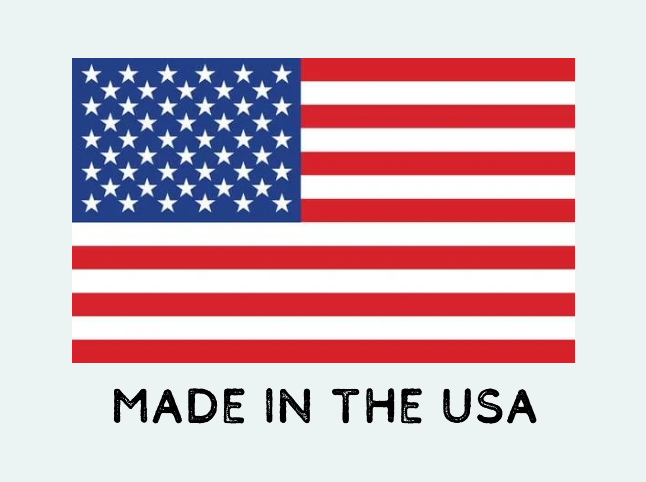
U.S. Manufacturing Expansion Driven by R&D Tax Credits
Posted by Jeffrey Feingold on 08.27.25
Since the start of Trump’s second term, a wave of corporations have announced major expansions of their U.S. manufacturing operations. While tariffs and trade policy are often cited in recent headlines, a far more powerful motivation is at play: the new R&D tax credits introduced under the One Big Beautiful Bill Act (OBBBA).
Signed into law on July 4, OBBBA has essentially reshaped the financial incentives for companies that build, innovate, and manufacture here in America. The legislation locks in permanent, expanded R&D tax credits that allow businesses to offset significant portions of their investment in new facilities, advanced technologies, and domestic innovation pipelines.
Why the Big Beautiful Bill Matters
Before OBBBA, many companies weighed the costs of re-shoring production against global realities of cheaper labor overseas, foreign tax incentives, and lower energy costs. For some industries, especially capital intensive ones like pharmaceuticals and semiconductors, bringing manufacturing home was difficult to justify.
With OBBBA in effect the economics look different:
- Every dollar invested in qualified R&D and advanced manufacturing on U.S. soil directly reduces corporate tax liability.
- Innovation heavy industries stand to benefit the most, including biotech, semiconductors, clean energy, health sciences and artificial intelligence.
- The bill makes 100% bonus depreciation permanent, meaning companies can immediately write off the cost of new equipment and facilities.
- Combined with existing deductions, the expanded R&D credit creates a tax environment that rivals or exceeds many global competitors.
For U.S. corporations, this has transformed what was once a long term, high risk decision into a tax-advantaged growth strategy.
Corporations Betting Big on U.S. Expansion
Several household names have already committed tens of billions of dollars to new and expanded facilities, many explicitly tying these investments to innovation and R&D:
- Abbott Laboratories – Investing $500 million in manufacturing and R&D upgrades at plants in Illinois and Texas, adding up to 300 jobs.
- Apple – Pledging $500 billion over four years, including a new 250,000-square-foot Houston facility to produce servers powering Apple’s AI. CEO Tim Cook highlighted the company’s confidence in American innovation, noting the new tax environment makes long term investments more attractive.
- Chobani – Building a $1.2 billion mega-plant in New York, set to be the largest dairy factory in the U.S., while expanding its Idaho operations. Together, these projects will add thousands of jobs and boost domestic food manufacturing.
- Johnson & Johnson – Announcing a $55 billion investment in new U.S. facilities, beginning with a high tech North Carolina plant focused on breakthrough medicines for cancer, immune disorders, and neurological diseases.
- IBM – Committing $150 billion over five years, with $30 million earmarked for research and development in advanced computing and AI manufacturing.
- Nvidia – Manufacturing chips and AI supercomputers in the U.S. for the first time. The company will add over 1 million square feet of new facilities in Arizona and Texas, expected to generate half a trillion dollars’ worth of AI infrastructure.
- Roche – Investing $50 billion in U.S. R&D and production, including a new 900,000-square-foot manufacturing center for its weight-loss medicine portfolio.
- TSMC – Expanding its semiconductor investment in Phoenix to a staggering $165 billion, adding three new plants, advanced packaging facilities, and a major R&D hub.
Beyond Tax Breaks: Building the Future at Home
While tariffs may provide short-term protection for some industries, economists agree they rarely deliver lasting job growth. The OBBBA’s R&D credits, however, create a long-term structural advantage for U.S.-based production.
Industries where intellectual property and innovation are central such as pharmaceuticals, biotech, semiconductors, and AI now see the U.S. as not only a large consumer market, but also the most tax-efficient place to develop and manufacture their next generation products.
For workers, this translates into tens of thousands of new, high-paying jobs in advanced manufacturing, technology, and research. For communities, it means revitalized industrial hubs, strengthened supply chains, and a competitive edge in the global economy.
The Bottom Line
The OBBBA’s expanded R&D tax credits and permanent bonus depreciation have shifted the calculus for multinational corporations.
With companies from tech giants to pharmaceutical leaders committing hundreds of billions in new U.S. facilities, one thing is clear: the future of innovation is being built in America.
Do Your Manufacturing Activities Qualify for Valuable R&D Tax Credits?
Does your manufacturing business resolve technological challenges through the innovative use of products and processes? Despite its name, the research and development (R&D) tax credit program includes far more activities than research, patents and laboratory work in high-tech, medical and scientific industries.
Many manufacturers do not realize the R&D tax credit extends beyond basic research to include applied research. The R&D credit is intended for manufacturers who improve the manufacturing process by making it more advanced, efficient and environmentally friendly. The credit is also intended for activities related to process design and development.
Find Out if Your Activities Qualify
The R&D tax credit can be a lucrative incentive for innovative businesses. Given the new permanent nature of the tax credit, now is the time to consider whether activities performed by your company qualify for major cash-saving tax credit opportunities.
Request a free assessment to determine qualifying R&D tax credit eligibility.
Tax Point Advisors, a firm with expertise in working with small and midsize companies, works with businesses that may qualify for R&D tax benefits. For more information, read our e-book: The Manufacturer’s Guide to R&D Tax Credits. For more information, call us at (800) 260-4138, or please send us a message with the form below.



